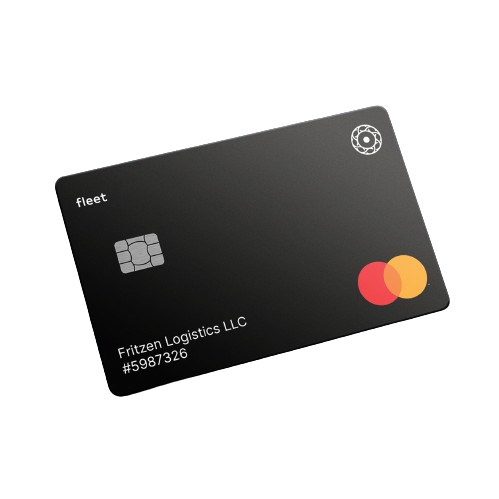Delivery Management 101: What is it and Why is it Important?
Running a successful delivery business is a juggling act. Overseeing one effectively requires package tracking, driver dispatching, route planning, fleet maintenance, customer service, and countless other daily tasks.
Ultimately, both high-level and ad-hoc concerns boil down to one question: how do we move a product from one place to another in the most efficient, cost-effective manner possible?
This is what we’ll tackle in our run-through of delivery management 101.
What Is Delivery Management?
If you’re curious about how to start a delivery business with contract drivers, this delivery management guide is for you. Broadly speaking, delivery management involves implementing logistics processes, emerging technologies, and best business practices to streamline your service delivery workflow. Its purpose is to ensure that goods are swiftly, economically, and securely moved from A to B.
But why has process improvement suddenly become so crucial for daily and long-term operations?
While changes to the shipping industry were already underway, the global COVID-19 pandemic spotlighted many logistical quagmires inherent in delivery operation processes and supply chains. And as consumers become evermore accustomed to having products rapidly delivered to their door, today’s freight and courier industries face heightened pressure to improve their delivery management tenfold.
Today, most of the improvements in delivery management are the result of:
- Automations that simplify the logistics process and cut down on human error
- Best practices that drain fewer resources (fuel, vehicles, manpower)
- Technologies that optimize operations and reduce spend
Why Does Delivery Management Matter?
In such a competitive industry, a company’s success comes from its delivery management. When executed properly, this can create myriad advantages that empower an organization to operate more effectively. Some of these include:
- Improved fleet operations – Your business relies on a fleet of delivery vehicles to operate. These vehicles often represent one of the larger capital investments a company must make. By implementing practices like preventative maintenance and driver training and education, you can increase driver safety, maximize vehicle performance and availability, and reduce operating costs.
- Faster delivery process – When your routes are optimized and your drivers can communicate with dispatchers and customers, you increase the speed and accuracy of package delivery. All of this impacts customer experience and can help cut delivery time.
- Reduced waste and operational costs – Whether you’re tasked with finding the cheapest fuel along your route, charting the most fuel-efficient pathways to customers, or preempting costly vehicle breakdowns, delivery management empowers you to spend less while doing more. This is essential for improving cash flow.
- Happier customers – Today’s customers demand more from a delivery business. They don’t just want packages delivered on time—they want an array of rapid delivery options and to know exactly where a package is in transit. Moreover, they prefer to be notified once it’s arrived. If you can meet these expectations, you will have more satisfied and loyal customers. And by improving your retention rate, you make good on your bottom line.
- Continued optimization – Delivery management isn’t a one-off project. It’s an ongoing process of continuous optimization. When you equip the business with powerful data and analytics capabilities, you can judge historic performance against current performance and identify precisely where your business can be enhanced.
{{CTA}}
How Can You Improve Your Delivery Management?
Are you curious about how to manage a delivery business? Every business must resolve unique operational challenges in the course of optimizing delivery management. That said, there are several effective ways most companies can increase their efficiency overall:
Optimizing Delivery Management with AtoB
Success in an industry like shipping requires constant operational improvement — but few companies have the budget, workforce, or patience to optimize independently.
At AtoB, our underlying purpose is to support your delivery management improvement initiatives. Our fleet fuel cards can help you manage and reduce your operating costs, centralize trucking payroll processing, and take complete control over your fleet’s finances.
Thriving in the face of mounting industry pressures is challenging, but it’s far from impossible with the right partner in your corner. If you want to learn how to build a smarter fleet, fill out your AtoB application in just 5 minutes to get started.
Sources:
McKinsey. Ordering in: The Rapid Evolution of Food Delivery.
https://www.mckinsey.com/industries/technology-media-and-telecommunications/our-insights/ordering-in-the-rapid-evolution-of-food-delivery
Trucking Research. An Analysis of the Operational Costs of Trucking: 2020 Update.
https://truckingresearch.org/wp-content/uploads/2020/11/ATRI-Operational-Costs-of-Trucking-2020.pdf
Get started with AtoB

Reviewed by
Vedant Khamesra is the driving force behind product management at AtoB. Specializing in strategic partnerships, SMB solutions, and new product development, Vedant seamlessly navigates P&L responsibilities while leading product execution and strategy. He is fueled by AtoB's mission to empower truckers and fleets with intelligent financial tools and services, making their lives easier and more rewarding.
Start saving today


